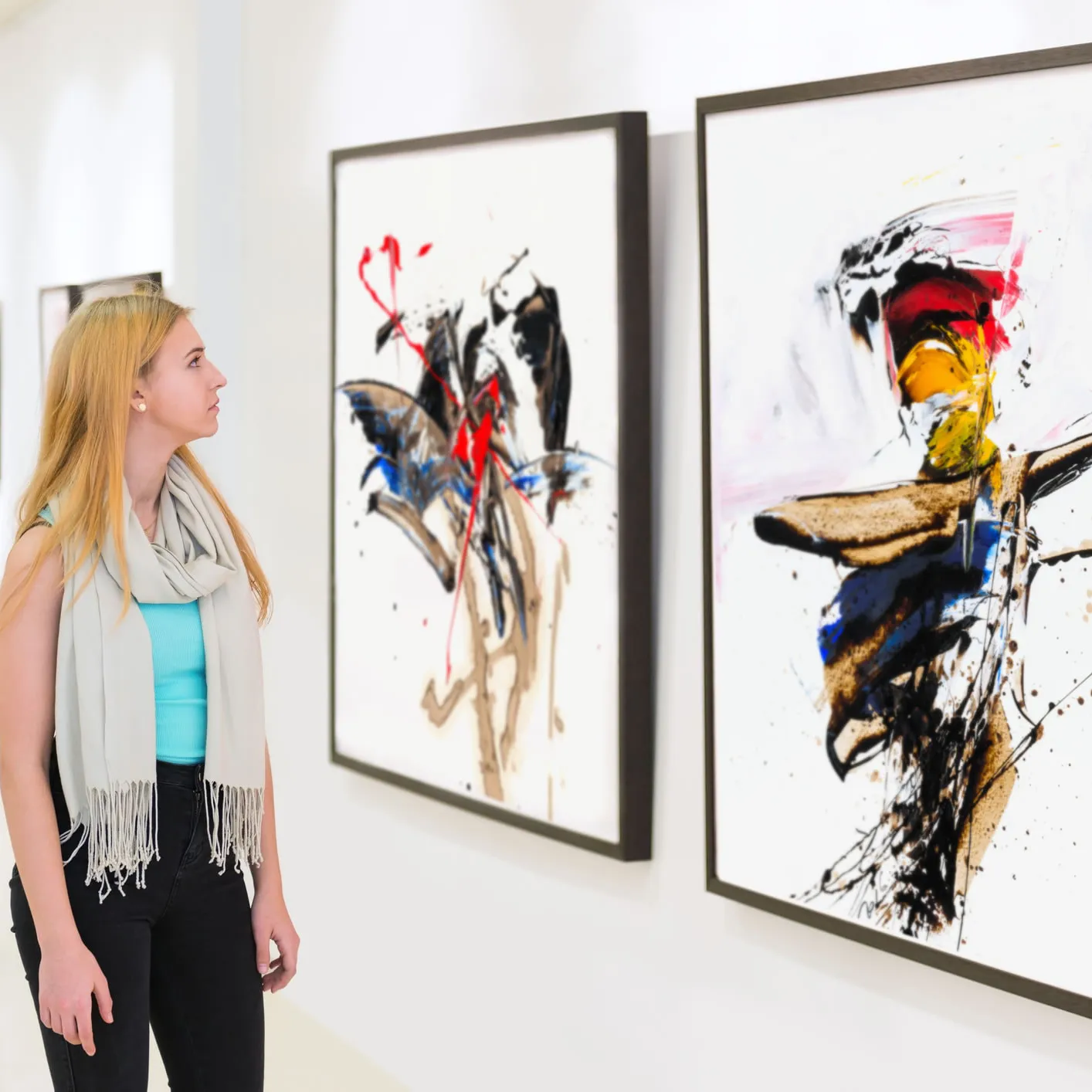
What should I include in my Artist Bio?
What is an artist bio?
At the most basic level, an artist bio is a short paragraph that provides information about you, your art, and your ideas. It can detail your background, ideas and inspirations, and the mediums and techniques you favour. An artist bio should be around 150 words and be written in the third person.
Remember that an artist bio isn’t a CV, which is a list of your accomplishments, or an artist statement, which is all about a collection of works or specific piece. An artist bio is much broader and focuses on you as an artist.
You can put your bio on your website or other platforms, or even submit it to accompany an exhibition or show.
Why is it important?
Having an artist bio has many benefits. Your bio can help to boost your SEO, because the keywords you use in it will allow search engines to connect you to people looking for artists like you. Then, once someone has found your page, your bio will give them an introduction to you, which will help them to understand and connect with you and your art.
What should an artist bio include?
The absolute basics are your name, your preferred art mediums, and your artist philosophy. Once you’ve got these, you can add other bits of information that you think might interest your audience - but make sure to still keep it clear and concise!
Here are some ideas for your bio:
A short introductory sentence
Kick off your bio with a short sentence that captures your readers attention and introduces yourself.Background and education
Outline any artistic training or education you have and any noteable mentors or institutions you have been associated with. Highlight how these experiences have influenced and helped to shape your artistic style.Some previous experiences and awards
Yes, an artist bio is not your CV. However, you might like to include a few select accomplishments or experiences - such as residencies, exhibitions, awards, grants or collections - in your bio to showcase the recognition you have achieved and impact your art has had.Exhibitions and shows
Draw attention to your professional experience by mentioning your noteable shows you've participated in - group or solo. Include the names of the galleries these were held at, to show which venues have recognised your work and also to make it easier for readers to find out a bit more about your past shows.Publications and press
Mention some positive reviews, interviews or articles about your art in publications such as art journals, magazines or online platforms. This is great to add to your credibility and emphasise your media presence.Artist statement
This acts as a reflection of your motivations, ideas and inspirations as an artist. It can help people to have a deeper understanding of your artistic choices, themes and methods and is not only interesting to read about, but can help readers to connect more with your work. Keep this clear and concise and make sure it conveys the passion and unique perspectives you bring to the world of art.Contact information
Whether you include this in your actual bio or not, make sure your audience has easy, obvious access to your professional contact information. This should include an email address, website, social media handles, or any other methods of contact you like to use. This is super important and means interested curators, clients, customers and industry professionals can get in touch and explore more of your work!
No matter what content you want to put in your bio, think of as many keywords as you can and scatter them throughout - not only will this keep your bio on topic and relevant, but it will elevate your SEO!
Tips for your Bio
Keep it concise
Make sure to keep it around 150 words - and make sure these words are simple enough and not all jargon and niche lingo. Also, keep your information relevant and avoid rambling. We find this keeps your bio clear and concise and ensures that everyone will be able to use it to gain a better understanding of you as an artist.Focus on your niche
If you have something that makes your work unique - perhaps a medium or technique, an aim, a theme - focus on it! You want to show potential clients what they will get from your artistry that they won’t get elsewhere.Include the ‘why’
Think about why you create what you do, rather just what and how. By leading with the ‘why’ behind your work, you’ll inspire brand loyalty, which essentially means creating a stronger connection with your clients. Talking about why you do what you do will help your work to resonate with people on a deeper level.Make sure it flows
Unlike a list, which is what your CV is, your bio should be written in an engaging way that flows naturally. By making your bio captivating and interesting, we find that people tend to be more motivated to find out more about you.Avoid sounding sales-y
Instead, focus on being natural and telling your story. You want to strike a balance of selling yourself and still coming across as your genuine self - a good way of doing this is to highlight your expertise and write about what is important to you and your art, rather than what you think other people find important.
With these tips, your bio is sure to be informative, and memorable, and inspire potential clients to get in touch.